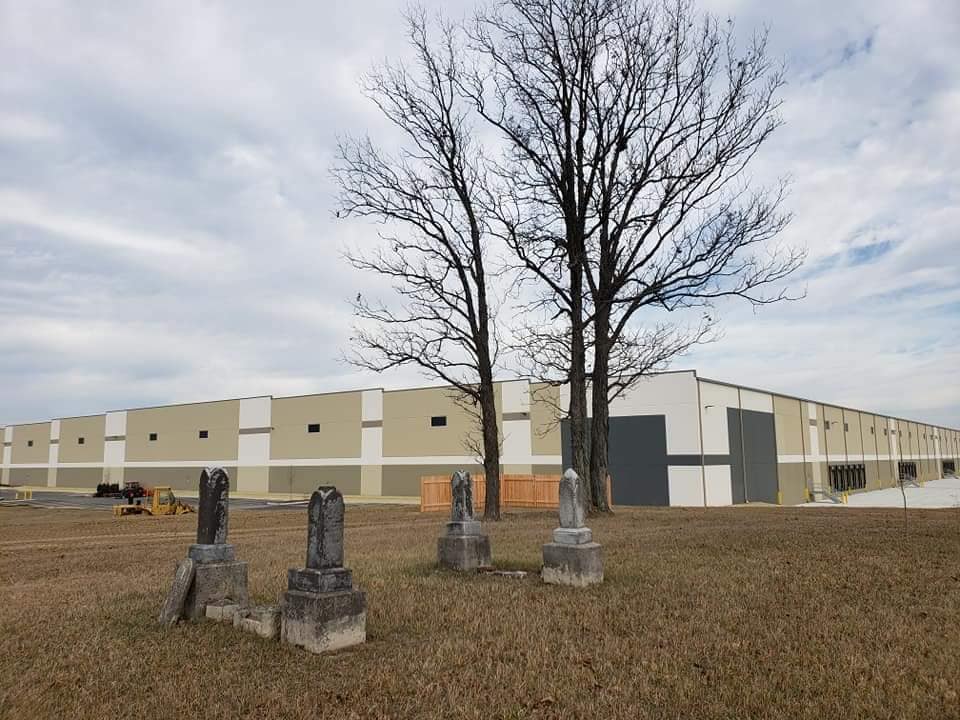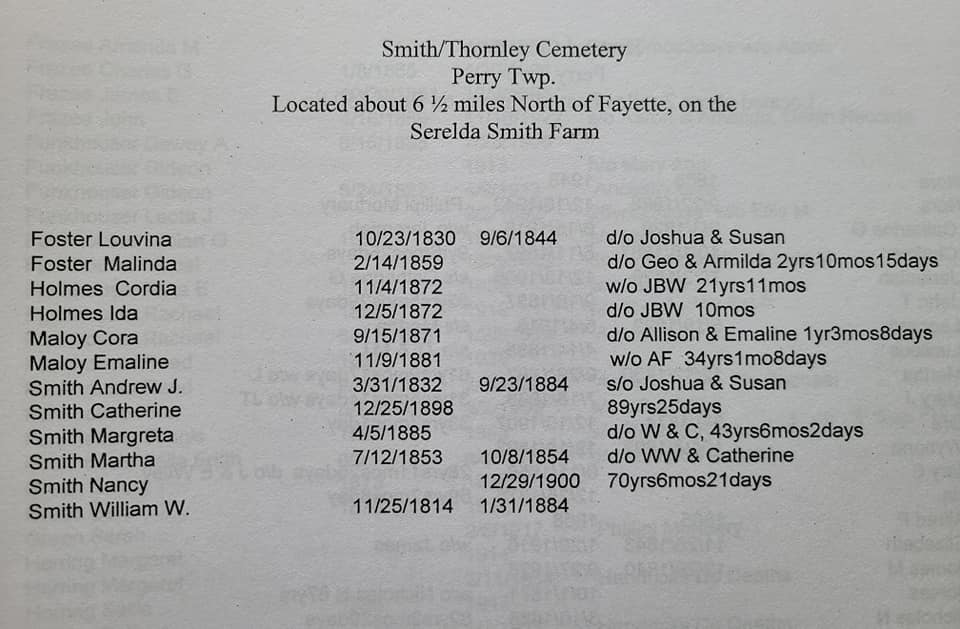Smith/Thornley Cemetery
In December of 2020 there was a post on Facebook about the Smith cemetery at I-65 & SR 267 which was being surrounded by warehouses.
I was unaware of this small family plot at the time, which appears to currently only have 4 stones remaining.
Oddly enough, a reporter doing a story for Indy Monthly magazine called the Boone historical society for info on this cemetery, and the call was sent to me.
Searching Indiana DNR and SHAARD, I learned that Smith cemetery was also called Thornley Cemetery, which immediately set off bells because I know there used to be a small town in that area called Thornleyville.
Research for a cemetery had led to a ghost town, and a whole new story.
Thornleyville had been founded in the 1830s at a location described as 6 miles southeast of Lebanon at the junction of Indianapolis road (52) and the Fayette road (267). The towns petition for a post office was granted in 1838 and ultimately discontinued in 1858 which seems to have led to the demise of the town.
Enoch Thornley, founder of Thornleyville, was commissioned as the postmaster on February 23, 1838.
Enoch was described as a gifted and unusual man who had been born in England and immigrated to America when quite young. As a young man , he came to Boone County and entered several tracts of land in Perry township and married June Darrough. He died in or about 1864. Enoch and June are said to have been buried just to the west of Thornleyville, which is where Smith/Thornley Cemetery is found.
Enoch Thornleys granddaughter was Mary Jane Schooler of Whitestown. Do you recognize the Schooler name? Yes, Schooler is the family name of the gravestones along Main Street at 500 south in Whitestown. Two small cemeteries, seperated by about 5 miles, but linked by a family connection.
The book, Boone County Indiana Cemeteries volume 2 by Marilyn Walker lists 12 burials in Smith/ Thornley Cemetery. This reference was based on a physical survey of visible stones at the time. There is no reference to Mr. & Mrs Thornley, but its possible their stones have been lost or they could have been nothing more that a simple wooden crosses which have long since rotted away.
Some info for this post came from a story by Ralph Stark written for the Boone your county magazine in 1976.
Additional assistance was provided by Boone historian Eric Spall at the Lebanon library.
Mike

